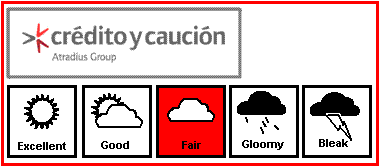| According to the Statistics Office INSEE, French GDP grew 0.4% in Q3 of 2010, confirming the countrys comprehensive, if slow, economic recovery. After low growth in the second quarter, household consumption increased 1.2% in Q3. The consumer confidence indicator has improved, gaining two points in November 2010 compared to October, although it remains below the long term average. Manufacturing production increased 0.7% on the previous quarter and 7% year-on-year. Gross fixed capital formation continued to improve: by 0.5%, after 0.7% on Q2. Exports remained steady, up 3% compared to 2.7% in the second quarter, while imports slowed slightly, 2.1% against 3.9% in Q2. 
The business climate indicators continued to improve gradually. In November 2010, production in the manufacturing industry declined slightly after a dynamic six months. Although the inventory level remains low, forecasts are positive, thanks to rising export orders. Activity in the electrical goods and machinery sectors fell in November and, although it remains satisfactory, forecasts are rather pessimistic. Activity in the transport and automotive industries increased, thanks to a low level of inventory. However, production will probably decline as a result of a particularly low number of orders. The performance of the pharmaceuticals, rubber and plastics sectors is very positive and, with low inventory levels and higher international demand, production will increase. Although activity in the chemicals industry declined, forecasts remain positive, again because of low inventory levels. In contrast, production in the textile sector has continued to slow down, with a scarcity of new orders signalling a problematic outlook. The construction sector is recovering slowly but forecasts are uncertain, as orders and backlogs are below the normal average and production capacities are not yet fully used. The retail industry recorded positive results in Q3, following a difficult second quarter. However, in November, activity slowed and forecasts are less optimistic. Loans for the private sector, excluding financial institutions, continued to rise in September 2010 - up 3.6% year-on-year and 3.9% on the previous quarter - confirming the positive trend that Crédito y Caución had observed last summer. Loans for companies increased 1% year-on-year, with the contraction of short term credit issuance at last slowing, from -8.6% to -5.5%. Credit issuance for investments continued to increase: by 2.9 % year-on-year. A 10% decrease in insolvencies seems likely for 2010 According to Altares, the number of defaulting companies decreased by 3.8% year-on-year between January and September 2010: to 44,556 cases. This trend was even more positive in Q3, with a 7.4% decrease in insolvencies. In terms of sectors, most industries showed significant signs of improvement, particularly manufacturing industries [-20%]; construction [-7.8%] and retail [-8.8%]. However, food suffered a 12% increase in insolvencies, mainly in the bakery subsector. Based on this overall improving trend, we still forecast a 10% decrease in business insolvencies this year, followed by a further 5% decline in 2011. In October 2010, the Expected Default Frequency indicator for listed companies in France fell below 60 basis points for the first time this year - to 59 - reaching its lowest level since August 2008. For the whole of 2010, the Economist Intelligence Unit and the International Monetary Fund forecast that French GDP will grow 1.6%, followed by an increase in output of between 1.4% and 1.6% next year. For manufacturing industries, the investment forecasts for 2011 are optimistic: with a 9% increase. However, private consumption is expected to stagnate. |
